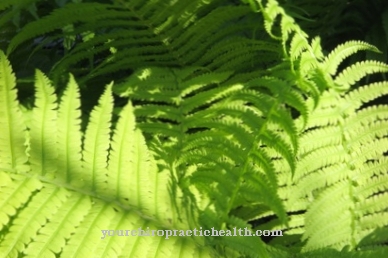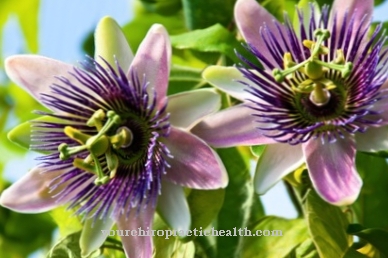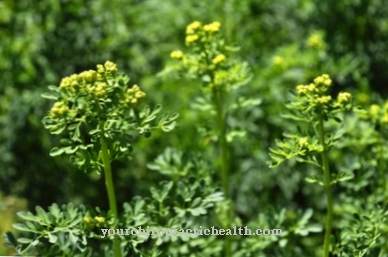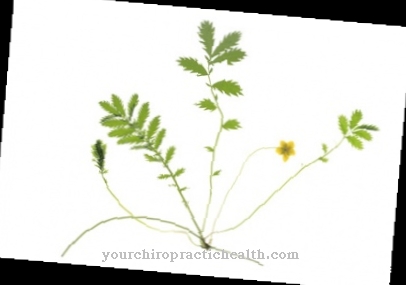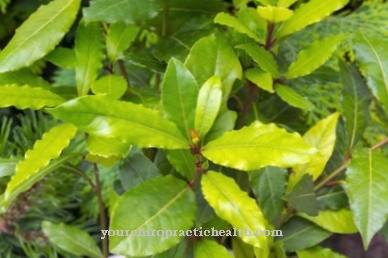The aspen, also Quaking aspen or White poplar called, botanically belongs to the willow family. A total of 35 species of poplar are known, the aspen or Aspe but is most widespread in Europe.
Occurrence & cultivation of the aspen

The quaking aspen is native to all of Europe, right up to Siberia and Asia Minor. It's not uncommon for the aspen an age of up to 100 years and more, older specimens are still viable, but mostly rotten to the core. An aspen tree can reach a height of 35 meters, the trunk has a diameter of up to one meter. Even when black poplar or white poplar is mentioned, the aspen is meant. In terms of appearance, the aspen resembles its closest botanical relative, the willow.
Because the flowers of the aspen also form so-called male and female catkins. A well-known characteristic feature of the aspen is that the leaves move clearly audibly and visibly even when there is little draft. This is where the popular expression “tremble like aspen leaves” comes from. Quivering aspen grows very fast like all willow plants. An aspen is considered fully grown at the age of 60, so compared to other tree species, the aspen reaches adulthood quickly.
Effect & application
The trunk of an aspen tree can grow straight or slightly inclined. The treetop of the aspen can be irregular, multi-part or conical or rounded and wide. The aspen bark is almost completely smooth at the beginning of the growth phase and only develops a typically gray-black, thick and longitudinally cracked bark structure in adulthood. Preparations and preparations from different parts of the plant are used for medicinal purposes.
Preparations made from aspen are assigned to the pharmacological group of anti-inflammatory drugs. The best-known herbal anti-rheumatic agent from the willow family is salicylic acid from willow bark; there is a close botanical relationship to aspen. The tree bark, the fresh shoot tips and the leaves of the aspen tree are used for medicinal purposes.
The bioactive pharmacological ingredients remained almost unchanged even when the plant parts were dried or heated. Similar to willow bark, aspen also contains various chemical compounds with a high salicylic acid content. The main fields of application of the pharmacological preparations result from this.
The analgesic, antipyretic and anti-inflammatory effects are clearly empirically documented and proven. A tea brew can be made from the leaves. Other parts of the plant such as bark or shoot tips must be boiled in clear, soft water for at least 30 minutes so that the individual salicylic acid compounds can pass into the boiling water. The use of products made from aspen is exclusively naturopathic.
Pain medication does not contain any original components from the aspen, only chemically simulated derivatives. It is also known to be used as a rheumatic bath for muscular exhaustion, to support colds or to relieve pain in the musculoskeletal system. In addition to a full bath with aspen added, partial baths as cold preparation are also possible, for example for knee osteoarthritis or tennis elbow.
In addition, the leaves of the aspen probably also contain tumor-inhibiting substances, because animal experiments on mice have shown that certain tumors regress under the application of active ingredients from the aspen. However, the research results cannot simply be transferred to humans, so there is still a long way to go before cytostatic agents from the quivering aspen are ready for the market.
Importance for health, treatment & prevention
The aspen contains highly effective, bioactive substances in all plant parts and also in the roots. The aspen is therefore rightly of great phytotherapeutic importance with a high healing potential. Although the main focus is on the salicylate compounds, not all of the valuable ingredients in aspen are known. There are also medical professionals who generally warn against self-directed use because, in their opinion, the safety and effectiveness of preparations made from aspen have not been adequately proven.
Herbal salicylates should never be used in children under 12 years of age. Even those who use products and preparations made from aspen to support their rheumatic complaints should not do so for a longer period of time and should consult their doctor before using them. Use during pregnancy and breastfeeding should also be avoided. Quite a few people also suffer from hypersensitivity to salicylates. In this group of people and in those with a tendency to allergies or asthma, preparations made from aspen may also not be used.
Serious, sometimes life-threatening side effects could occur.Patients with the hereditary disease glucose-6-phosphate dehydrogenase deficiency, which occurs rarely in Germany, must under no circumstances ingest salicylates orally. In addition to the phytotherapeutic preparation with concentrated doses of the ingredients of the aspen, the homeopathic preparation from parts of the plant from the aspen has established itself.
The active ingredients are here in a very diluted form, which is why an application is far less risky. The homeopathic preparation of aspen from potency D23 can also be used as so-called globules in paediatrics. Abdominal pain with a tendency to cramps, particularly psychological, often respond well to this gentle form of therapy. In addition to salicylic acid as the main active ingredient, there are also essential oils and flavonoids in the aspen. In naturopathic urology, a therapeutic attempt is also recommended for benign enlargement of the prostate gland, benign prostatic hyperplasia.


